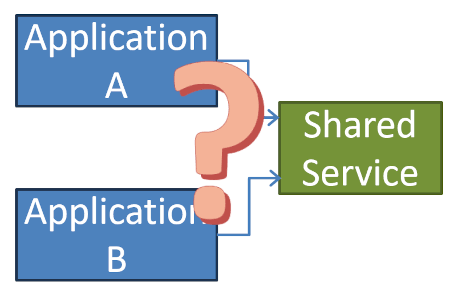Updated: Category: Transformation
Movie recipes
It’s well known that Hollywood movies follow a few, proven recipes: someone’s leading a happy life, until a bad thing forces our hero to go on a mission; there’ll be a giant set back (usually bad news for the hero’s best buddy), and 15 minutes before end the hero breaks through, resulting in everything ending well (except for the best buddy). I watch most movies in airplanes (it’s hard to work or sleep while they serve “food”), so I can bear the repetition as my investment in real and opportunity cost is limited.
Yet something can be learned even from Hollywood movie recipes. One popular recipe portrays a person who has been leading a seemingly normal life, but for one or another reason engages someone from the underworld to take care of some dirty work. To at least initially protect the character’s moral grounds, the actions appear to be justified by a pressing need or a vague principle of greater good. The person from the underworld often comes in form of a hitman, who is tasked with scaring away, kidnapping, or disposing of a person who stands in the way of a grand plan. An elaborate (and captivating) example of this genre is the movie Fargo, but it’s a tad too complex as a metaphor for digital transformation. Instead, if you haven’t already seen it, forget about IT for two hours and watch that movie.
An equally fitting but simpler example is The Accountant with Ben Affleck. Here, the CEO of a robotics company hired a hitman to dispose of his co-founder who may be onto his financial manipulations. The company also hired an accountant to investigate some irregularities with their bookkeeping. As it turns out, the accounting brings a lot more skills to the table than anticipated. After a lot of action and countless empty shells, things… (spoiler alert!) don’t end well for the instigator.
The digital hit(wo)man
Coming back to the world of IT and digital transformation, we can quickly see the analogy: a business leader is under pressure from the board to change the organization to become faster and “more digital”; there may be some amount of dirtywork involved, such as re-skilling, re-orgs or, de-layering. But it’s in the name of greater good, i.e., saving the company. Wouldn’t it be easiest to recruit some sort of digital hit(wo)man, who can clean the place up and gently dispose of any naysayers before disappearing as quickly as they came?
The natural candidate wouldn’t be as good looking as Ben Affleck and wouldn’t bring a trailer full of firearms. Instead, they would come with credentials such as having held a major role at a brand-name digital company, having led a corporate innovation center, or having run a start-up incubator. He or she would be full of energy and promise, and would have one or the other magic trick up their sleeve.
Crossing over into the unknown
Sadly, though, things are more likely to end up as in the movie than in a successful transformation. The key challenge in hiring someone from a different world (under or not) is that you won’t know the world you’re crossing over into. For example, you wouldn’t know how to pick a good candidate because the whole premise is that you need someone who has a very different background and brings completely different skills. You also won’t understand the unwritten rules of engagement in the other world. While as an IT leader you may not have to worry about someone else outbidding you to turn your own hitman against you, you may still hit a few snags, such as:
- The transformation expert you are hiring may feel that it’s entirely reasonable to quit after a half a year as that’s how things work where they’re from.
- They may simply ignore all corporate rules - after all they are here to challenge and change things, right? But perhaps not to blow their budget half way through and to storm into the CEOs office every time they have what they think is a good idea.
- They may also feel that it’s OK to publicly speak about the work they’re doing, including all of your organization’s shortcomings.
As a result, some of the stories involving a digital hit(wo)man don’t fare much better than in the movies. While luckily the body count generally stays low, many things can go wrong: a lot of money is spent, many expectations are set and then missed, and the anticipated results aren’t achieved.
Asking trust fund kids for investment advice
Besides not understanding the rules of engagement, another large risk is that the digital hit(wo)man comes from a digital environment, so they perhaps understand well what it looks like and how it works. What they didn’t have to do is build one from scratch or, more difficult yet, transform an existing organization into a “digital” one.
Asking someone who grew up in the Googles of the world to help you become like them is a bit like asking trust fund kids for investment advice: they may tell you to convert a small portion of your assets into a building downtown and converting it into luxury condos while keeping the penthouse for yourself. This may in fact be sound advice, but tough to implement for someone who doesn’t have $50 million as starting capital.
The IT equivalents are manifold:
- The new, shiny (and expensive) innovation center may not actually feed anything back into the core business because the business isn’t ready for it (you might have been better off just buying FaceBook stock).
- The new work model may be shunned by employees or violate existing labor contract agreements.
- The staff may lack the skills to support a shiny new “digital” platform.
- Lifting and shifting all servers to the cloud may not bring any visible benefits and actually cause issues because applications are flaky, not built for the cloud, and operational staff isn’t familiar with the cloud operating model.
How about the enterprise hitman?
Interesting, the dangers of hiring a hit(wo)man is symmetric and thus not limited to enterprise companies wanting to become more digital. So-called digital companies that are looking to engage enterprise customers are prone to be looking for the enterprise hitman, usually hired from a household-name enterprise vendor. The results are generally the same, or more likely worse, primarily because digital companies consider the transition to becoming “enterprise ready” as simpler and therefore underestimate the effort involved.
Who to look for?
Transforming a complex organization without any outside help is going to be difficult - you won’t even know much about what you are aiming for (and may not have realized that there isn’t a stable target picture). So how do you go about finding a good person to help you? As usual, there isn’t an easy recipe, but my experience has shown that there are a few things that you can do to improve the odds:
- First of all, don’t expect a digital hitman who carries silver bullets to kill your legacy zombies. Look for someone who has shown the stamina to see a transformation through.
- Having worked for a “digital” company doesn’t automatically qualify a person as a transformation agent. Yes, they’ll have some experience working in the kind of organization that you’re inspired by (or compete against). However, that doesn’t mean they know how to take you from where you are to where you want to be. You can’t just copy-paste one company’s culture onto another - you need to plot a careful path. Lastly, they may be extremely frustrated with your existing platforms and processes and leave quickly (I was often frustrated but I didn’t throw in the towel!). Look for someone who has had some exposure to enterprise systems and environments.
- Knowing how a digital company acts doesn’t mean the person knows the kind of technology platform that’s needed underneath. Yes, “move to the cloud” can’t be all wrong, but it doesn’t tell you how to get there in which order and with which expectations. Therefore, find someone who can ride the architect elevator at least a few floors down.
- Smart advice is relatively easy to come by compared to actual implementation. Look for someone who has spent time inside a transforming organization as opposed to looking on from the outside.
If you feel that these suggestions will narrow down the set of available candidates, you are likely right. You are also likely engaging in the first important exercise for any transformation: putting wishful thinking aside and bracing for reality.
Make More Impact as an Architect

The Software Architect Elevator helps architects and IT professionals to take their role to the next level. By sharing the real-life journey of a chief architect, it shows how to influence organizations at the intersection of business and technology. Buy it on Amazon US, Amazon UK, Amazon Europe




